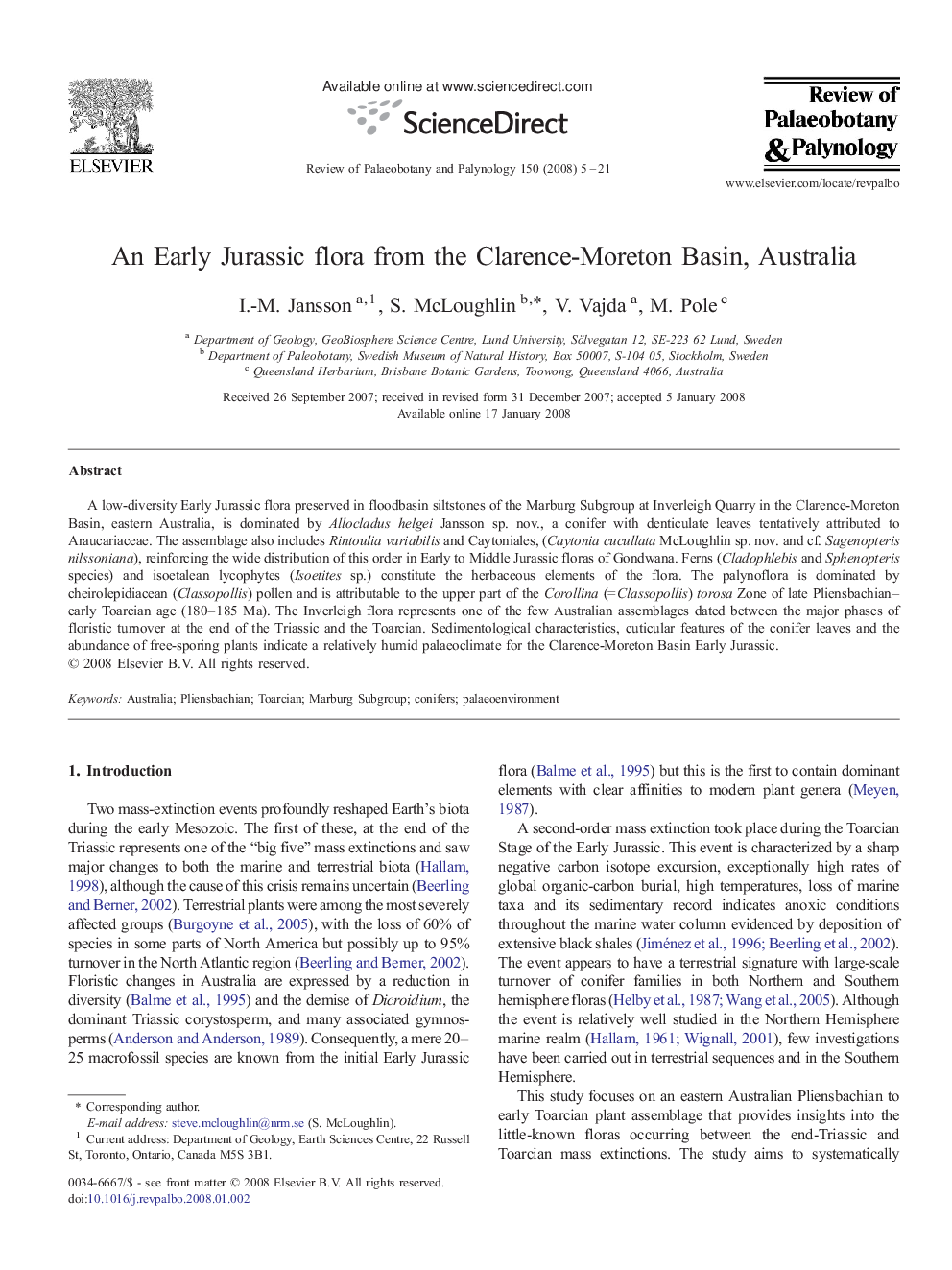| Article ID | Journal | Published Year | Pages | File Type |
|---|---|---|---|---|
| 4750951 | Review of Palaeobotany and Palynology | 2008 | 17 Pages |
A low-diversity Early Jurassic flora preserved in floodbasin siltstones of the Marburg Subgroup at Inverleigh Quarry in the Clarence-Moreton Basin, eastern Australia, is dominated by Allocladus helgei Jansson sp. nov., a conifer with denticulate leaves tentatively attributed to Araucariaceae. The assemblage also includes Rintoulia variabilis and Caytoniales, (Caytonia cucullata McLoughlin sp. nov. and cf. Sagenopteris nilssoniana), reinforcing the wide distribution of this order in Early to Middle Jurassic floras of Gondwana. Ferns (Cladophlebis and Sphenopteris species) and isoetalean lycophytes (Isoetites sp.) constitute the herbaceous elements of the flora. The palynoflora is dominated by cheirolepidiacean (Classopollis) pollen and is attributable to the upper part of the Corollina (= Classopollis) torosa Zone of late Pliensbachian–early Toarcian age (180–185 Ma). The Inverleigh flora represents one of the few Australian assemblages dated between the major phases of floristic turnover at the end of the Triassic and the Toarcian. Sedimentological characteristics, cuticular features of the conifer leaves and the abundance of free-sporing plants indicate a relatively humid palaeoclimate for the Clarence-Moreton Basin Early Jurassic.
